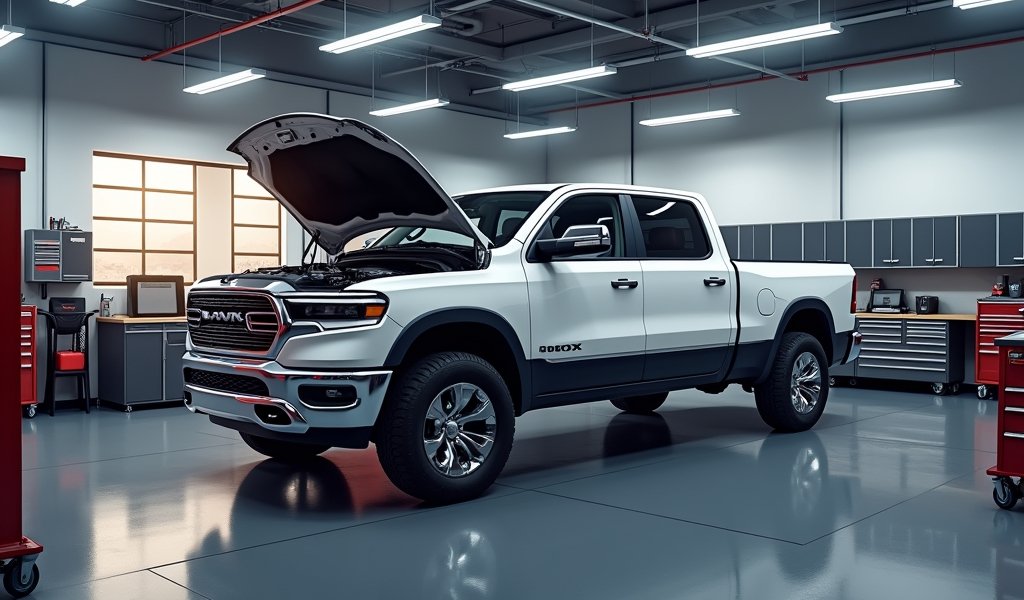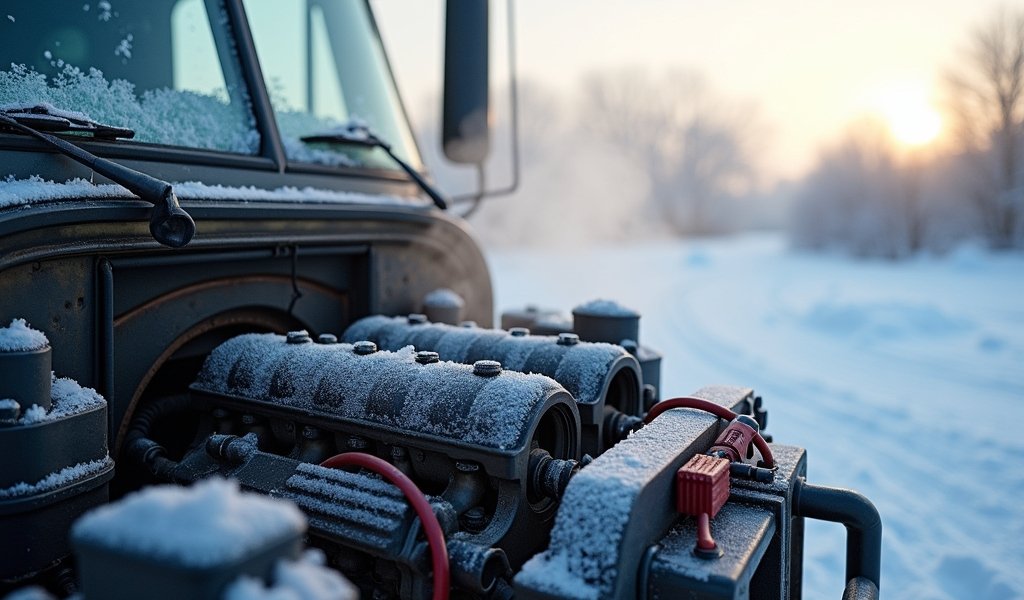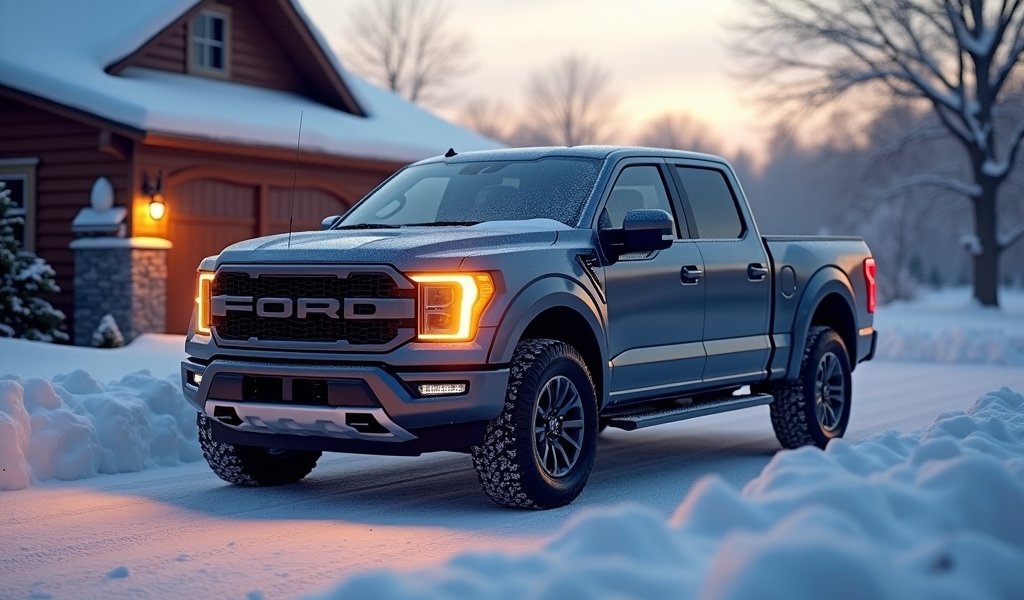Overview
This article explains the critical role of diesel engine block heaters in cold weather, detailing their various types (freeze plug, engine-mounted, oil pan, and circulating heaters), proper installation techniques, usage best practices, and maintenance requirements. By preventing fuel gelling and reducing oil viscosity, block heaters ensure easier starts, improve engine longevity, reduce emissions, and enhance cold-weather performance when used for the recommended 2-4 hours before starting.
Table of Contents
- Understanding Diesel Block Heaters: Your Engine’s Winter Companion
- Why Your Diesel Engine Needs a Block Heater
- Types of Block Heaters: Finding Your Perfect Match
- Installation Tips: Setting Up Your Diesel Engine Block Heater
- Usage Best Practices: Making the Most of Your Block Heater
- Maintenance and Troubleshooting: Keeping Your Block Heater Running Smoothly
- Conclusion
- Frequently Asked Questions
Understanding Diesel Block Heaters: Your Engine’s Winter Companion
A diesel engine block heater is like a warm blanket for your engine on a frigid winter morning. As someone who’s had their hands deep in diesel engines for over two decades, I can tell you these unassuming devices are worth their weight in gold when temperatures plummet. They’re designed to keep your diesel engine’s vital fluids warm during cold weather, ensuring that when you turn that key, your engine roars to life rather than groans in protest.
Think of your diesel engine as a hibernating bear – when it gets too cold, it simply doesn’t want to wake up. The block heater gently nudges it awake by maintaining critical components at operational temperatures. Unlike their gasoline counterparts, diesel engines rely on compression rather than spark plugs to ignite fuel, making them particularly stubborn starters in cold weather.
In the world of diesel engines, a block heater isn’t just a luxury – it’s practically essential equipment for anyone living in regions where the mercury regularly dips below freezing. The difference between a diesel engine with and without a block heater on a cold morning is like night and day. One starts smoothly with minimal fuss; the other might leave you stranded with a battery drained from failed start attempts.
Why Your Diesel Engine Needs a Block Heater
Diesel fuel has a personality all its own. When temperatures drop, diesel fuel begins to thicken and develop wax crystals – imagine honey slowly crystallizing in your pantry. This phenomenon, known as “gelling,” can clog filters and fuel lines, preventing your engine from receiving the fuel it desperately needs to run. A block heater helps prevent this cold-weather tantrum by keeping the engine warm enough to maintain fuel in its proper state.
Beyond fuel concerns, cold diesel engines face another formidable enemy: viscous oil. Engine oil at low temperatures becomes thick and sluggish, like molasses in January, making it difficult to properly lubricate engine components during startup. This increased resistance forces your starter and battery to work overtime, potentially leading to premature wear or failure of these components.
The environmental benefits shouldn’t be overlooked either. A cold diesel engine produces significantly more emissions during the first few minutes of operation. By protecting your vehicle from extreme cold, a block heater reduces this “cold start penalty,” cutting down harmful emissions while improving fuel efficiency. According to research from the U.S. Department of Energy, preheating your engine can reduce emissions by up to 60% during initial startup.
There’s also the matter of engine longevity. Cold starts create excessive wear on engine components, much like how running on a cold winter morning without warming up puts extra strain on your joints. The majority of engine wear occurs during these cold starts when oil hasn’t yet reached all critical components. A block heater mitigates this wear, potentially extending your engine’s service life by thousands of miles.

Types of Block Heaters: Finding Your Perfect Match
Block heaters come in several varieties, each with their own strengths and installation requirements. Like choosing the right tool for a specific job, selecting the appropriate block heater for your diesel engine requires understanding the options available.
Freeze Plug Heaters
Freeze plug heaters are the workhorses of the block heater world. They replace one of your engine’s freeze plugs (also called core plugs) with a heating element that extends into the coolant passages of your engine block. Like a submarine’s periscope dipping into water, these heaters directly warm your engine’s coolant, distributing heat throughout the entire cooling system.
The primary advantage of freeze plug heaters is their efficiency. By directly heating the coolant, they provide even, thorough warming of the entire engine. However, installation can be challenging, often requiring partial drainage of the cooling system and sometimes necessitating access to the underside of the vehicle.
Engine-Mounted External Heaters
These heaters attach to the exterior of your engine block, typically using existing bolts or attachment points. Think of them as heating pads for your engine, transferring heat through direct contact with the block. They’re generally easier to install than freeze plug heaters since they don’t require modifying the cooling system.
External heaters are ideal for engines with limited access to freeze plugs or for those who prefer a less invasive installation process. While they may not heat as evenly as internal options, quality external heaters still provide significant benefits, especially when installed at strategic points on the block.
Oil Pan Heaters
As their name suggests, oil pan heaters attach directly to your engine’s oil pan. They’re like electric blankets wrapped around the reservoir of your engine’s lifeblood. These heaters specifically target the oil, reducing its viscosity for easier cold-weather circulation.
Available in both adhesive pad styles and magnetic versions, oil pan heaters offer relatively simple installation. They’re particularly beneficial for engines that struggle with oil circulation issues during cold starts, though they don’t provide the same comprehensive warming as coolant-based heaters.
Circulating Heaters
These sophisticated systems use a small pump to circulate warmed coolant through your engine, much like a heart pumping warm blood through a body. They’re typically installed in-line with the radiator hoses and require a power source to operate the heating element and circulation pump.
Circulating heaters provide excellent, uniform heating throughout the entire cooling system. Their installation is moderately complex but generally doesn’t require draining coolant or accessing difficult areas. The engine coolant temperature sensor works alongside these heaters to monitor effectiveness.
Installation Tips: Setting Up Your Diesel Engine Block Heater
Installing a block heater might seem daunting, but with the right approach, it’s manageable for many DIY-minded vehicle owners. That said, there’s no shame in seeking professional help if you’re not comfortable working on your engine. Here are some essential tips for a successful installation:
Preparation Is Key
Before you begin, gather all necessary tools and materials as if you’re preparing for surgery. You’ll typically need basic hand tools, possibly coolant (for freeze plug installations), and safety equipment including gloves and eye protection. Having everything at hand prevents the frustration of stopping mid-job to search for a missing socket or screwdriver.
Read the manufacturer’s instructions thoroughly before starting – they’re not just suggestions but crucial guidelines for proper installation. Each block heater model has specific requirements and steps that must be followed for safe, effective operation.
Location Matters
Choosing the optimal installation location is like finding the perfect spot for a woodstove in a cabin – it should distribute heat efficiently while remaining accessible for maintenance. For freeze plug heaters, select a plug that provides good access and is positioned to heat the largest possible volume of coolant.
External heaters should be placed where they contact the largest surface area of the block or oil pan, avoiding exhaust components, moving parts, and areas subject to road debris. Consider the thermostat opening temperature when positioning your heater to maximize effectiveness.
Electrical Considerations
The electrical connection for your block heater deserves careful attention. Route the power cord away from hot engine components, moving parts, and potential road hazards. Secure it with appropriate ties or clips to prevent vibration damage.
For convenience, consider installing a heavy-duty extension cord socket in an accessible location, such as behind the grille or through the front bumper. This eliminates the need to open the hood every time you want to plug in your heater. According to NHTSA winter driving recommendations, ensuring your vehicle’s heating systems are functioning properly is essential for safe winter driving.
Step-by-Step Installation Basics
- Ensure the engine is completely cool before beginning work
- For freeze plug installations, drain coolant to a level below the selected plug
- Remove the existing freeze plug carefully to avoid damaging the engine block
- Install the heater according to manufacturer specifications, using appropriate sealants if required
- Refill the cooling system with the proper coolant mixture
- Test the heater before the first cold weather use
Remember that patience during installation pays dividends in performance and longevity. Rushing through the process is like hastily laying the foundation of a house – small mistakes now can lead to significant problems later.

Usage Best Practices: Making the Most of Your Block Heater
A block heater is a remarkable tool, but like any tool, its effectiveness depends on how you use it. Following these best practices will ensure you get maximum benefit while minimizing energy consumption and wear on the device.
Timing Is Everything
You might think that longer is better when it comes to plugging in your block heater, but that’s not necessarily the case. Most block heaters only need 2-4 hours to adequately warm an engine. Plugging in overnight is like preheating your oven for hours before baking – it wastes energy without providing additional benefit.
For precise control, invest in a programmable timer for your block heater. This simple device, similar to the timers used for holiday lights, can be set to turn on your heater a few hours before your morning departure. The small investment pays for itself quickly through reduced electricity usage.
Temperature Thresholds
Block heaters provide the most benefit when temperatures fall below 20°F (-7°C). Above this threshold, modern diesel engines can usually start without significant difficulty. In milder conditions, you might only need to use the heater on particularly cold mornings.
That said, there’s no harm in using your block heater at higher temperatures if you want to reduce engine wear and improve initial performance. Think of it as an investment in your engine’s longevity – a small current expense for long-term savings.
Power Management
Most block heaters draw between 400 and 1500 watts of power. To put that in perspective, a standard household coffee maker uses about 900 watts. While this isn’t excessive, multiplied over many hours, the energy consumption can add up on your electric bill.
To minimize unnecessary power use, consider these strategies:
- Use a timer to limit operation to the necessary pre-start period
- On moderately cold days, reduce heating time to 1-2 hours
- In extremely cold conditions (-20°F/-29°C or below), increase to 4 hours
- If possible, park in a garage or sheltered area to reduce heating requirements
Safety Considerations
Safety should never take a backseat when using electrical devices around vehicles. Inspect your block heater cord regularly for signs of damage, particularly where it exits the engine compartment or connects to extension cords. A damaged cord is like a smoldering cigarette in a dry forest – a fire hazard waiting to happen.
Use only heavy-duty, outdoor-rated extension cords designed for high-amperage applications. Standard household extension cords can overheat under the continuous load of a block heater, potentially causing electrical fires. Always fully unwind extension cords before use to prevent dangerous heat buildup.
Maintenance and Troubleshooting: Keeping Your Block Heater Running Smoothly
Like any component in your vehicle’s ecosystem, block heaters require occasional attention to ensure they continue performing reliably. A well-maintained block heater is like a trusted old wood stove that fires up faithfully every winter, while a neglected one might leave you in the cold when you need it most.
Seasonal Inspection
Before winter arrives, perform a thorough inspection of your block heater system. Check the power cord for cracks, frays, or signs of heat damage, particularly at stress points where the cord exits the engine compartment. Inspect any accessible portions of the heating element for corrosion or coolant leaks.
Test your block heater before the first cold snap by plugging it in and carefully feeling the engine block or oil pan (when safe to touch) to verify warming. Some heaters will make a subtle sizzling sound when first plugged in – this is normal and indicates the element is heating.
Common Issues and Solutions
If your block heater stops working, troubleshooting follows a logical progression from simple to complex causes. Start by verifying the power source with another electrical device. Check for tripped circuit breakers or GFCI outlets that may have activated due to moisture.
Inspect all electrical connections, including the extension cord and outlet. Corrosion or looseness can prevent proper current flow, much like a partially disconnected battery cable prevents starting. In regions where block heaters are common, auto parts stores often offer testing services to determine if your heater has failed internally.
When to Replace
Block heaters typically last 3-5 winters with regular use, though many continue functioning effectively for much longer. Signs that replacement might be necessary include:
- Failure to heat the engine despite confirmed electrical power
- Coolant leaks around the heater installation point
- Repeated tripping of circuit breakers when the heater is plugged in
- Visible damage to the heating element or permanently attached cord
Replacing a block heater follows essentially the same process as the original installation. If your vehicle has become a trusted companion over many winters, consider upgrading to a higher quality or more efficient model rather than simply replacing with the same type.
Conclusion
A diesel engine block heater is more than just an accessory – it’s a crucial ally in the battle against winter’s chill. Like a faithful guardian, it stands watch through frigid nights, ensuring your diesel engine wakes ready to perform when you need it most. The benefits extend far beyond mere convenience, touching on engine longevity, environmental impact, and operational reliability.
By understanding the different types available, installing them correctly, and following best practices for usage and maintenance, you can maximize the return on this relatively modest investment. Your diesel engine will reward you with easier starts, improved cold-weather performance, reduced emissions, and potentially thousands of additional miles of service life.
As we’ve explored throughout this guide, the relationship between a diesel engine and its block heater is symbiotic – each helping the other perform at their best when conditions are at their worst. Whether you’re a commercial driver depending on reliable starts for your livelihood or a personal vehicle owner who simply wants the peace of mind that comes with knowing your diesel will start on even the coldest mornings, a properly selected and maintained block heater delivers value that far exceeds its cost.
Remember that while block heaters provide significant benefits, they’re part of a comprehensive cold-weather strategy that should include proper fuel additives, regular maintenance, and appropriate driving habits. Together, these practices ensure your diesel engine remains a reliable partner through winter’s harshest challenges.
Frequently Asked Questions
How long should I plug in my diesel block heater before starting?
Most diesel block heaters only need 2-4 hours to adequately warm an engine. Anything beyond 4 hours provides minimal additional benefit and wastes electricity.
Can I leave my block heater plugged in overnight?
While you can leave it plugged in overnight, it’s more efficient to use a timer set for 2-4 hours before your morning start. This saves electricity while providing the same benefit.
At what temperature should I start using my block heater?
Most diesel engines benefit from block heaters when temperatures fall below 20°F (-7°C). However, using it in milder temperatures (around 32°F/0°C) can still reduce engine wear and improve initial performance.
Will a block heater drain my battery?
No, block heaters draw power from an external electrical outlet, not your vehicle’s battery. In fact, they make starting easier, which reduces the load on your battery during cold starts.
How do I know if my block heater is working properly?
After plugging in for about an hour, the engine block should feel warm to the touch near the heater’s location. Some heaters also make a subtle sizzling sound when first plugged in, which is normal.

